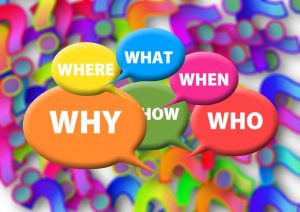When we acquire our first language (our native tongue) as young children, we don’t get stressed out because we learn things as they come along, or when we find a need for a particular word. When a child is thirsty, he quickly learns the word “water“. And once he has heard the words “Don’t touch” on a number of occasions, he probably understands the meaning. We could refer to this as Need Learning or Deductive Learning. As children, we are not subject to rejection or embarrassment if we can’t remember a word. But, we are accustomed to getting massive doses of approval when we learn a new word – Look! , He said: “daddy” .

So, in general, our first language learning experiences can be considered relatively enjoyable, due to a non-aggressive environment. Slowly, we become more able to communicate our needs, instead of just crying or smiling. We acquire new language at our own rate. We establish our own rhythm. And we probably feel pretty good about the whole thing.
The next question is how we, as adults, can make learning our target language as easy for us as it seems to be for a child learning his first language. The answer is: In exactly the same way.
Prioritizing and Eliminating as much Stress as Possible
How to prioritize? Generally speaking, existing language learning methodology is often based on a very high percentage of unnecessary material, especially concerning vocabulary. All too much importance is frequently put on learning (memorizing) colors, parts of the body, articles of clothing, names of foods, and so forth. Ask yourself how often you think you would need to know any of the above.
Undeniably, a good command of verb tenses is fundamental for any language, but knowing the right words takes a close second position.
How can we prioritize in vocabulary? Imagine a conversation in hour own language with a friend or colleague at work. Most likely, an amazing percentage of the vocabulary in the conversation will involve words like BE, HAVE, SAY, DO, GET, COME, GO, TAKE, BRING, SEE, HEAR, KNOW, TALK, LIKE, and WANT.These are examples of High-Frequency words. They enter our daily conversations with the greatest frequency.

Knowing how to ask questions is an essential activity when learning a foreign language, so words like WHAT, WHERE, WHEN, HOW HOW MUCH, HOW MANY, WHO, and WHY can be some of the first words one should know and master in the target language. Similarly, having a reasonable number of adjectives, such as good, bad, great, nice, late, early, etc. will always come in handy, and are high frequency as well.
Without having to give any further examples, I think you can see that if we exercise a priority in what we choose to learn, it can provide us with a valuable short-cut in the learning process, or at least minimize our feelings of frustration. Nothing is worse than feeling that you can’t get even the simplest of ideas across.
Minimalizing Frustration
What can we do, then, to eliminate stress and frustration as much as possible? Once again, exactly theway children do. By taking things easy and keeping within our “comfort zone“. In order to feel as comfortable as possible, get at least a basic vocabulary in the above-mentioned areas, well-learned and easily accessible, which means that you can produce the language relatively quickly and naturally. When you can easily access these key, high-frequency words which you will need in your attempts to be understood, your levels of anxiety will be reduced noticeably. The lower the anxiety levels, the more confident you are going to feel, and the greater the satisfaction with the target language.
Many great communicators are people of few words. Just make sure that the few words you choose to learn will be amongst the words you will need.
Read the Spanish version here.





